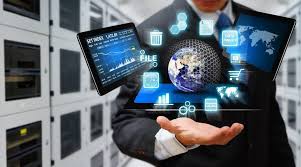In today’s rapidly evolving digital world, mastering fundamental technology concepts is no longer optional—it’s essential. The textbook “Technology for Success: Computer Concepts“ paired with MindTap interactive learning tools offers a comprehensive and modernized curriculum for understanding the core pillars of computing. This resource, aligned with ISBN 13: 8220118198594, helps learners develop practical digital skills essential for both academic and professional success.
This guide breaks down every module of the book to offer an in-depth, easy-to-understand overview of what you can expect from this valuable learning material.
Module 1: The Impact of Digital Technology
This module begins with a historical overview of computing—tracing the evolution from early machines to today’s smart technologies. Students learn how digital tools influence modern life, from business productivity and e-commerce to education and health care systems. The chapter emphasizes how society is digitally interconnected and why understanding this transformation is vital for personal and career development.
Key Takeaways:
- Learn the timeline of computing innovations.
- Understand how digital transformation influences industries.
- Identify key technologies shaping today’s world.
Module 2: The Web and the Cloud
Understanding the web means more than browsing websites. This module introduces how the internet functions—from domain names and IP addresses to search algorithms and web applications. Cloud computing is also explored, covering how data is stored remotely and accessed through cloud services like Google Drive, Dropbox, and iCloud.
Topics Covered:
- Structure of the World Wide Web
- Web browsers vs. search engines
- Cloud computing types: Public, Private, Hybrid
| Web Concept | Description |
|---|---|
| URL | Uniform Resource Locator, the address of a web page |
| Cloud Storage | Remote data hosting via internet access |
| HTTP/HTTPS | Web communication protocols ensuring secure access |
Module 3: Computer Hardware
In this section, learners explore the physical components that make up computing systems. From the central processing unit (CPU) to memory, input/output devices, and storage options—this module teaches students how hardware supports software.
Examples include:
- Motherboards and chipsets
- SSDs vs. HDDs
- Input tools: keyboard, mouse, scanner
- Output tools: monitor, printer, speakers
By understanding hardware, students can make informed choices when purchasing, upgrading, or troubleshooting tech equipment.
Module 4: Operating Systems and File Management
Operating systems (OS) are the backbone of any digital device. This module explores how operating systems like Windows, macOS, and Linux control device functionality. Students also learn the importance of organizing digital files effectively to avoid clutter and data loss.
Practical Lessons:
- Understanding GUI (Graphical User Interface)
- File extensions (.docx, .jpg, .pdf)
- Creating folder structures for projects
- Using shortcuts and batch operations
Module 5: Software and Applications
Beyond just installing a program, this module explains software functionality—from system utilities to creative and business apps. It teaches how to differentiate between licensed, freeware, and open-source applications, as well as the importance of regular software updates.
Types of Software:
- Productivity software – Word processors, spreadsheets
- Creative software – Video editors, graphic design tools
- Business tools – CRMs, ERP systems
- Mobile applications – Android & iOS apps
Module 6: Security and Safety
Cybersecurity is more critical than ever. This module presents common threats like viruses, ransomware, phishing, and identity theft. It teaches students to protect their data and systems through antivirus programs, password hygiene, and encryption techniques.
Security Best Practices:
- Create strong, unique passwords
- Avoid public Wi-Fi for sensitive transactions
- Enable two-factor authentication (2FA)
- Use VPNs and secure browsers
Module 7: Digital Media
Digital media includes everything from images and audio to videos and animations. Students explore how to create, manipulate, and share digital content responsibly. The section also touches on media file formats and copyright awareness.
Table: Common Media File Formats
| Media Type | File Format | Use Case |
|---|---|---|
| Image | .jpg, .png | Photography, design |
| Audio | .mp3, .wav | Podcasts, music |
| Video | .mp4, .mov | YouTube, presentations |
Module 8: Application Use and Development
This module introduces basic concepts of programming and software development. While it doesn’t teach coding in depth, it provides a strong foundation in how apps are structured and developed—from front-end to back-end.
Topics Include:
- Programming languages (HTML, Python, Java)
- App development life cycle
- Low-code and no-code platforms
Module 9: Web Development
Students are introduced to the building blocks of websites—HTML for structure, CSS for styling, and JavaScript for functionality. They learn how to read and write simple code, host websites, and understand responsive design for mobile compatibility.
By the end of this module, students should be able to:
- Create a basic HTML page
- Style a website using CSS
- Add interactivity with JavaScript
Module 10: Networking and Connectivity
In this section, learners study how computers communicate. It covers networking hardware, protocols, and types of networks. Students also explore how Wi-Fi, Bluetooth, and Ethernet work in personal and enterprise settings.
| Network Type | Description |
|---|---|
| LAN | Local Area Network, used in homes/schools |
| WAN | Wide Area Network, covers large geographical areas |
| VPN | Virtual Private Network for secure remote access |
Module 11: Digital Communication Tools
From Zoom to Slack and Gmail, digital communication tools are essential for collaboration. This module explains email etiquette, video conferencing, cloud collaboration, and professional networking.
Important Skills:
- Drafting professional emails
- Scheduling and participating in virtual meetings
- Sharing and editing documents in real-time
Module 12: Emerging Technologies – AI, Cloud & E-Commerce
The final chapters explore future-facing innovations. Artificial Intelligence (AI), Machine Learning (ML), and e-commerce platforms are demystified. Students gain insight into how businesses use AI for automation and analytics, and how cloud computing powers digital infrastructure.
Future Tech Areas:
- AI chatbots and recommendation engines
- Online shopping systems (Shopify, WooCommerce)
- Big data and predictive analytics
Module 13: Databases and Data Literacy
The textbook finishes with a critical component—databases. Students learn how information is stored, accessed, and organized using systems like SQL, Access, and Excel. This module highlights the importance of data literacy in the age of information.
Key Concepts:
- Tables, records, and fields
- Sorting and filtering data
- Querying databases for information retrieval
Module 14: Digital Ethics and Wellness
Digital responsibility and balance are essential. This final module emphasizes ethical technology use, the psychological effects of screen time, and issues like misinformation and digital addiction.
It encourages students to:
- Reflect on personal tech habits
- Practice respectful online behavior
- Understand ethical tech dilemmas (AI bias, data privacy)
📚 Conclusion: Why This Textbook Matters
Whether you’re a student, educator, or lifelong learner, “Technology for Success Computer Concepts MindTap ISBN 13: 8220118198594” provides a full-spectrum digital education. With MindTap’s interactive features, quizzes, and real-world case studies, learners gain both theoretical knowledge and practical skills needed to thrive in the digital era.
From coding to communication, and from security to ethical use, this textbook is your gateway to mastering technology for success.














Leave a Reply